Classic Cars, Movies, Music, and Other Stuff ...
We see very few rear-engined cars these days. I can’t think off hand of any in production other than Porsche, racing cars, and some buses. But that was not the case back in the day. Many manufacturers experimented with them – not the least Volkswagen. Even they’ve abandoned that.
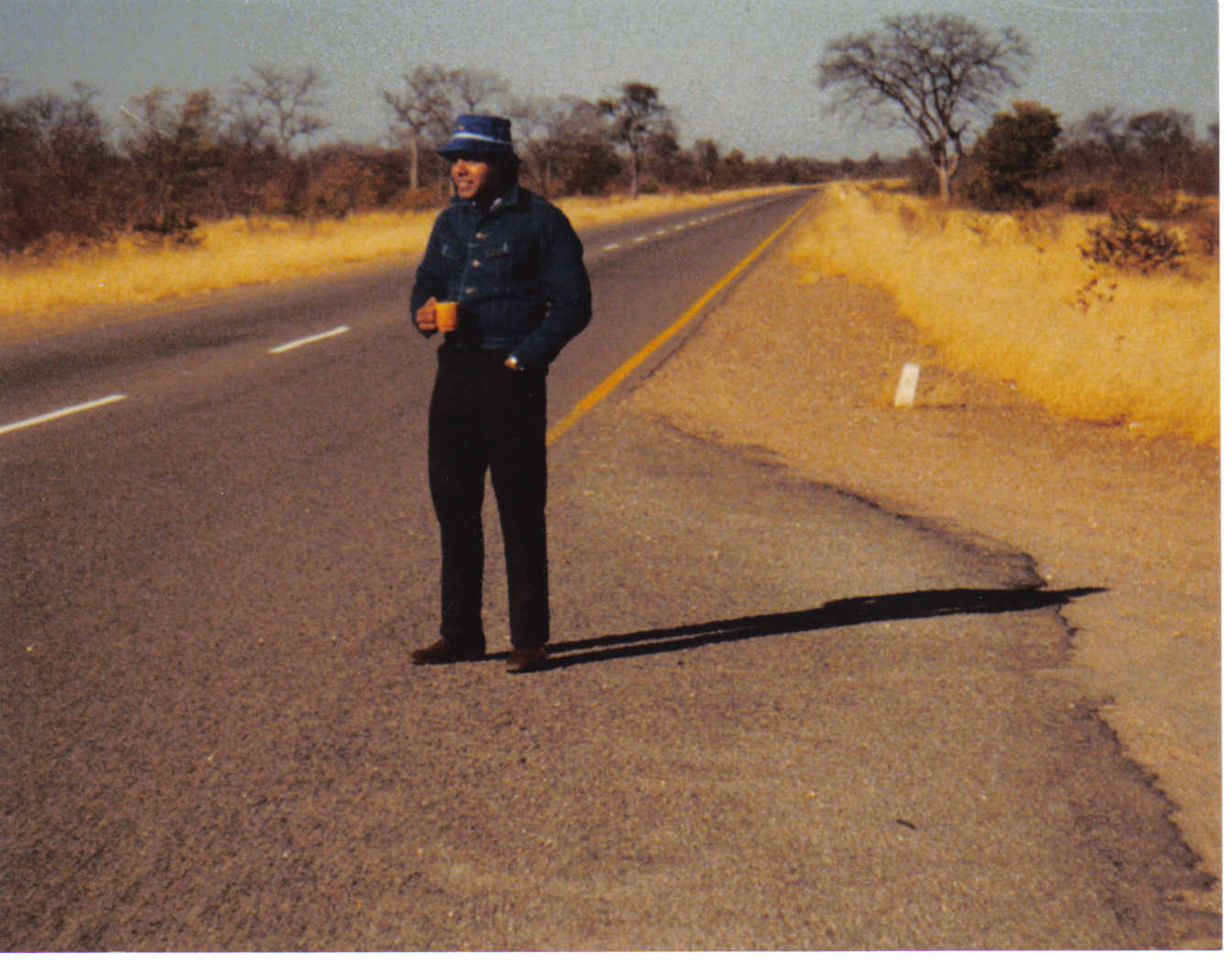
Let’s check out some rear-engined vehicles this time.
Why did they make these cars in the first place? An engine atop the driving wheels is easier and uncomplicated. No long driveshaft to the rear wheels means a flat floor with more space in the vehicle. The Transmission is less complicated as it’s close to the differential. Back then, cars were often rear wheel drive, so it all made sense.
Inexpensive and smaller commercial vehicles were designed with rear engines. VW Beetle was successful as it was affordable and inexpensive to make. But this was before the advantage of Front Wheel Drive vehicles was noticed.
First, let’s go to France, where manufacturers were always willing to try new ideas. And one of them was Renault.
“The car, as it is a successor to the previous ‘queen’ 4CV, is called the ‘Dauphine’ – the feminine heir in French.”
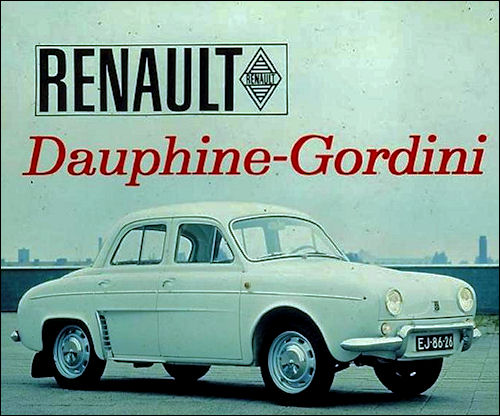
The Dauphine is the brainchild of the then Renault chairman Pierre Lefaucheux and engineer Fernand Picard. They felt Renault needed to replace its 4CV with an updated design to reflect new French living standards. Its design was inspired by the bigger, ostentatious, Renault Frégate. Like the 4CV, they decided to keep it rear-engined.
Work began on the design in 1949. Rigorous testing around Europe under different climatic conditions and redesigns later, the new “5CV” was ready for unveiling in 1956. Unfortunately, Pierre Lefaucheux was not there, as he had died in an accident in early 1955. The car, as a successor to the “queen” 4CV, is named the “Dauphine” – the feminine heir in French.
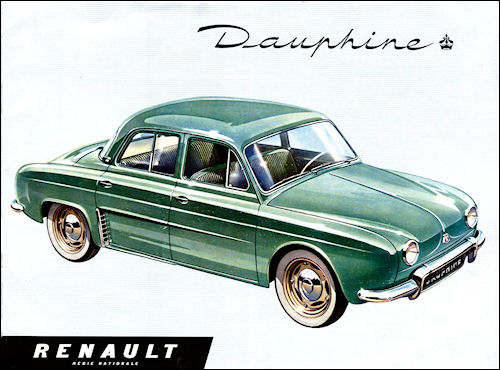
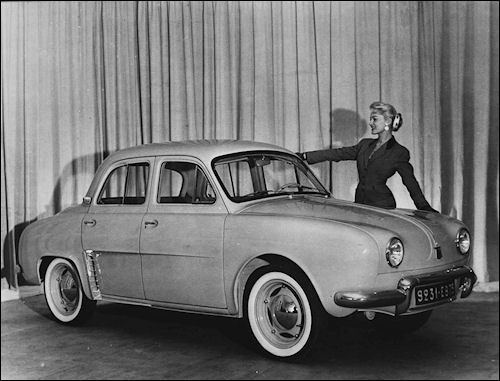
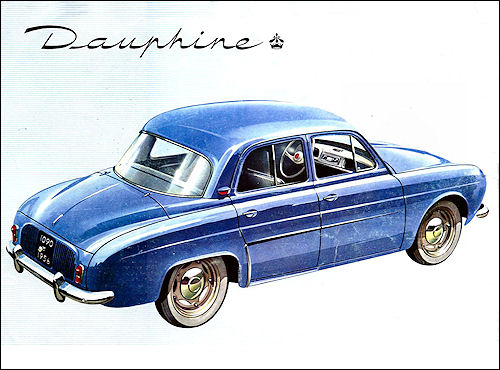


Remarkable design features adorn the Dauphine which is available in two versions – the upscale one named the “Ondine”. It is basically a small car with a 845 cc engine and a 3/4 speed manual and 3 speed semi-automatic transmission. Another unique attribute of the Dauphine is that it was available in bright colors. As I avoid technicalities to keep thing simple, stressing on the aesthetics, you can get more info on the specs here.
Upon launch, the Dauphine was declared an instant success. Its design is perfect for crowded Parisian roads. Motor Trend magazine declared it the “most beautiful car on the road.” Demand, and production of the car was rapid and Renault claimed it had sold a million of them in four years which is a European record for the time.
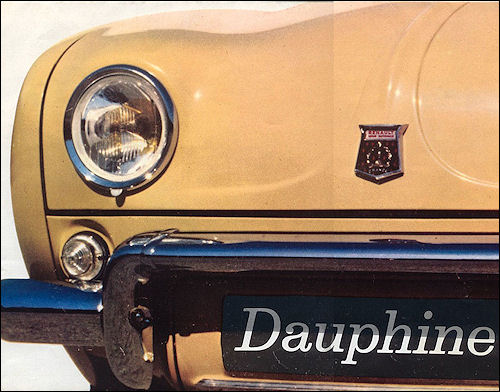
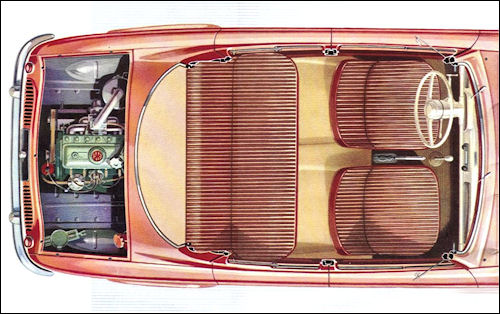
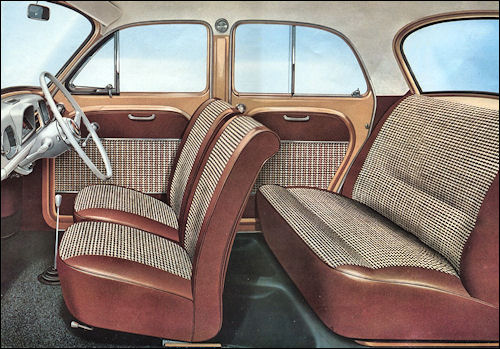
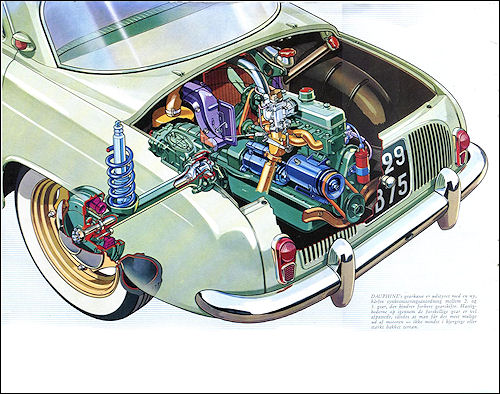
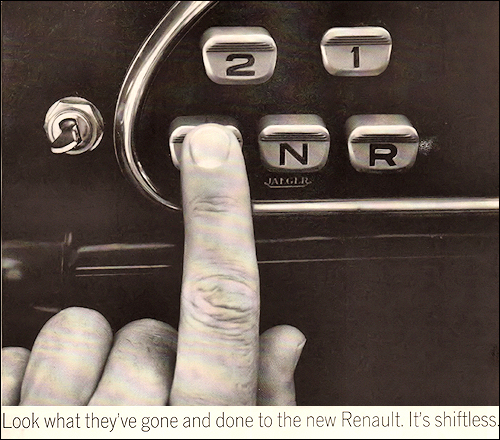
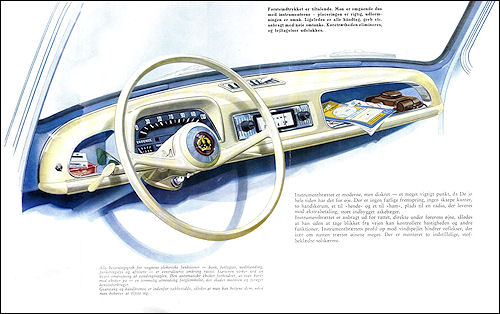
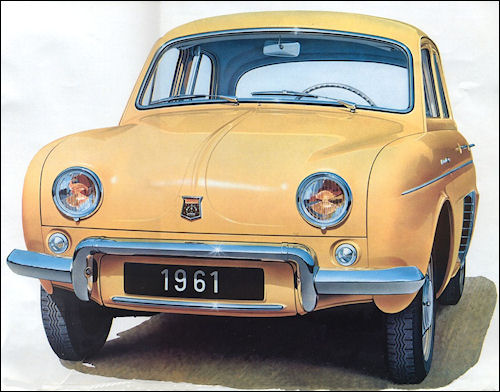


One look, and you can’t help appreciate its design. The “three-box” design allows ample room for passengers and luggage. A design that looks just as good today as it did back then. So successful was the Dauphine, it was also assembled in many other countries including Argentina, Australia, Brazil, Israel, Italy, New Zealand, Japan, Spain, and the United States – where there was also an electric version offered. Its successor too was another (rear-engine) beautiful car which we’ll talk about another time.
Throwback / YouTube.com
Okay, so let’s check out a cool rear-engined vehicle that was made in the United States. And I refer to the:
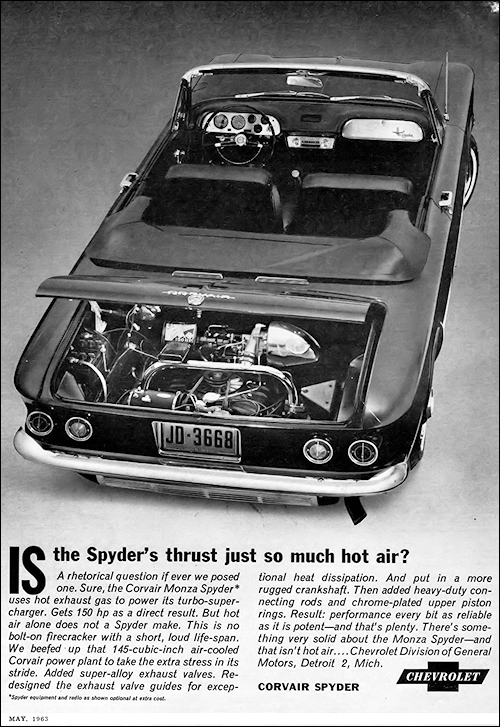
American car manufacturers specialized in making big cars. After all, it was a big country. But the success of European imports suggested that the public was interested in small cars too. So, the “big three” started looking into making smaller cars. Chevrolet decided to build one that was rear-engined. This would be the Corvair (Corvette + Bel Air).
It is a design unlike any other in the US at the time. A 6-cylinder air cooled rear-mounted engine with aluminum components powers the Corvair. Independent suspension with wide wheels and straight, elegant lines finish off the look. The much-loved tail fins of that era are absent, as is the chrome grill. On its launch, it was declared “Car of the Year” for 1960.
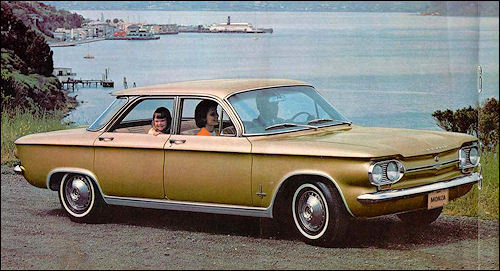
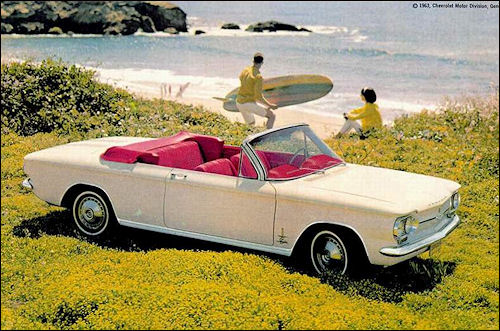
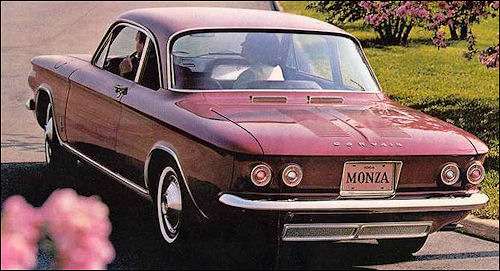


For the demanding American public, the Corvair was available in all body styles including convertible, coupe, sedan, station wagon, van, and pickup truck. Configurations include 2, 4, 6, and 8 doors for these different versions. Engine sizes range from 2.3 to 2.7 Liters. Transmissions were available in both Manual and Automatic versions.
There were two generations of the Corvair. The First Generation from 1960-64, and Second, from 1965-69. Along with many technical upgrades in the Second Generation, the overall appearance also became sleeker and more modern. But the size remained pretty much the same.
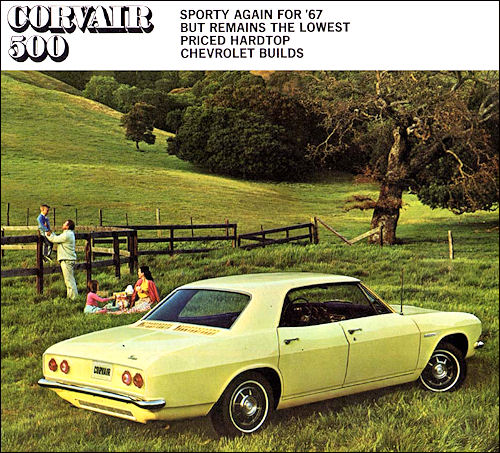
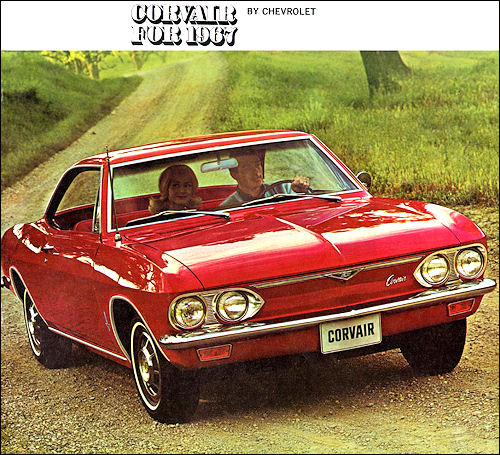


Chevrolet Corvair used new technologies and holds many patents in the that regard. This revolutionary design was not without critics. Many, including Ralph Nader, claimed the Corvair was difficult to handle and unstable during operation. However, independent research and testing by the National Highway Traffic and Safety Administration were unable to verify this complaint. They declared the Corvair as safe as any other conventional vehicle.
Unfortunately the success of Ford Mustang hastened the end of the Corvair. Chevrolet decided to abandon this design to compete against the more conventional Ford Mustang. Over 1.8 Million Convairs were sold over its 9-year run. The legacy of the Corvair led to the development of many other rear-engined concept vehicles using its platform.
US Auto Industry / YouTube.com
That brings us to our rare and unusual car of the moment. Keeping with the theme, this one’s rear-engined too. I refer to the:
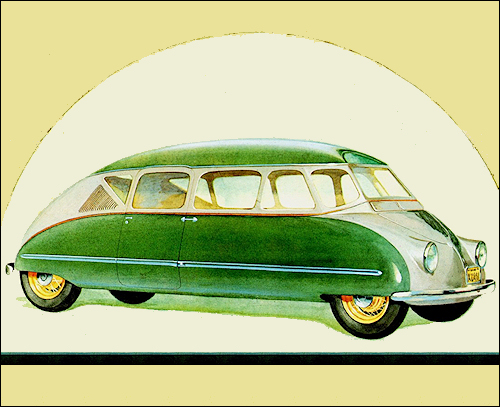
The Stout Scarab is considered as the first minivan ever built. It was designed by William B. Stout who was inspired by another vehicle. This would be the Dymaxion Car which was introduced by Buckminster Fuller in 1933.
William Stout modified the design of the Dymaxion by some clever tweaks and re-adjustments to obtain more space in the vehicle interior. The biggest of these is the elimination of the drive shaft and placement of the transmission. Some of the interesting design features include:
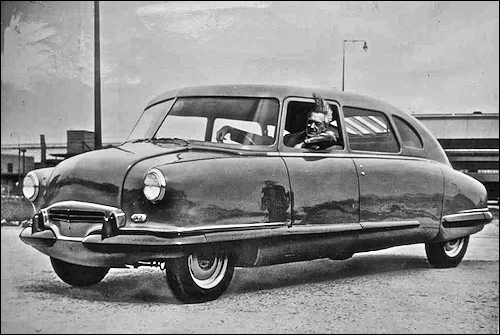
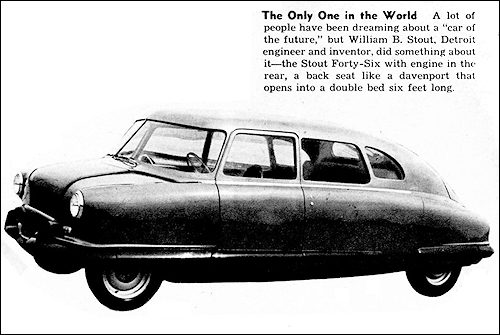


Despite its grand and forward thinking design, the Stout Scarab was expensive to make. Stout knew he wouldn’t be selling this vehicle on a mass scale. Not many were produced and the last version in 1946, known as the Stout Scarab Experimental, was driven by William Stout himself.
Newfields / YouTube.com
Deemed ugly at the time, the Stout Scarab is quite attractive going by how designs have evolved. It’s a vehicle that was, unfortunately, too ahead of its time to be appreciated. One can clearly see its influences in many of the vehicles today – especially the minivan.
This was our look at three rear-engined marvels. We’ll look at some more in the future. Until then, winter weather has already made its presence felt. So make sure, before you drive, wipe your head and tail lights to ensure you are visible to others. And don’t forget the plates either. It’s also the law in almost jurisdictions.
Pontiac GTO – One of the Original Muscle Cars
The Chevette: Chevrolet’s Forgotten “Vette”
Checking Out the Cars of Our Lives 8
Thaps On The Cars of Our Lives